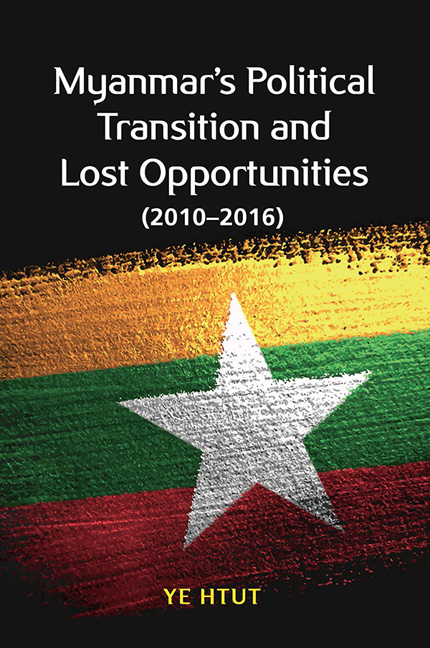Book contents
- Frontmatter
- Contents
- Foreword
- Acknowledgements
- Introduction: Myanmar's Political Reforms
- 1 The National Convention
- 2 The Constitution
- 3 The Union Solidarity and Development Party
- 4 Myanmar Spring and Aung San Suu Kyi
- 5 The Union Government
- 6 The Government and the Parliament
- 7 Shwe Mann's Checkmates
- 8 Turning Points
- 9 Media Reform
- Epilogue
- Appendix A President Thein Sein's Inaugural Address
- Appendix B President Thein Sein's First Address to the Cabinet
- List of Interviewees
- Index
- About the Author
- Plate section
- Frontmatter
- Contents
- Foreword
- Acknowledgements
- Introduction: Myanmar's Political Reforms
- 1 The National Convention
- 2 The Constitution
- 3 The Union Solidarity and Development Party
- 4 Myanmar Spring and Aung San Suu Kyi
- 5 The Union Government
- 6 The Government and the Parliament
- 7 Shwe Mann's Checkmates
- 8 Turning Points
- 9 Media Reform
- Epilogue
- Appendix A President Thein Sein's Inaugural Address
- Appendix B President Thein Sein's First Address to the Cabinet
- List of Interviewees
- Index
- About the Author
- Plate section
Summary
President Thein Sein began his reform agenda under the 2008 constitution. There were two aspects of the 2008 constitution that affected his reform agenda. The first were perceptions of its legitimacy, and the second were articles of the constitution that restrained the president's ability to implement his reform agenda.
Legitimacy
Although the military leaders intended to use the 2008 constitution as the main platform for their democratization process, their means of drafting the constitution was questionable. Senior General Than Shwe saw the constitution as a transitional one that could be amended in the future to achieve fully fledged democracy in Myanmar. State Peace and Development Council (SPDC) leaders said that the constitution and coming election were not the end of the democratization process but were just the beginning, and that the constitution would be amended based on the maturity of all stakeholders. Even though most of the stakeholders, including the National League for Democracy (NLD), could accept the 2008 constitution as transitional, there were strong objections to the drafting process. At the National Convention, the decision of the State Law and Order Restoration Council (SLORC) to form eight delegate groups to represent political parties, ethnic minorities and various sectors of Myanmar society was a correct approach for the participatory process. But the government's selection process created opposition, not only from the NLD but also from ethnic parties. Also, the lack of open debate at the convention contributed to the peoples’ mistrust of the constitution. People saw the entire process as highly undemocratic and as manipulated by the Tatmadaw (armed forces) in order to continue military dominance in politics.
When the National Convention concluded in September 2007, the ruling SPDC formed a Drafting Committee headed by Chief Justice Aung Toe. The committee drafted the constitution based on the basic principles and detailed principles adopted by the National Convention. They began the drafting process on 3 December and finalized a draft on 19 February 2008. Ten days earlier, on 9 February, the SPDC announced that a referendum on the new constitution would be held in May 2008 and that general elections for Union, state and regional hluttaw (legislatures) would be held in 2010.
- Type
- Chapter
- Information
- Publisher: ISEAS–Yusof Ishak InstitutePrint publication year: 2019

